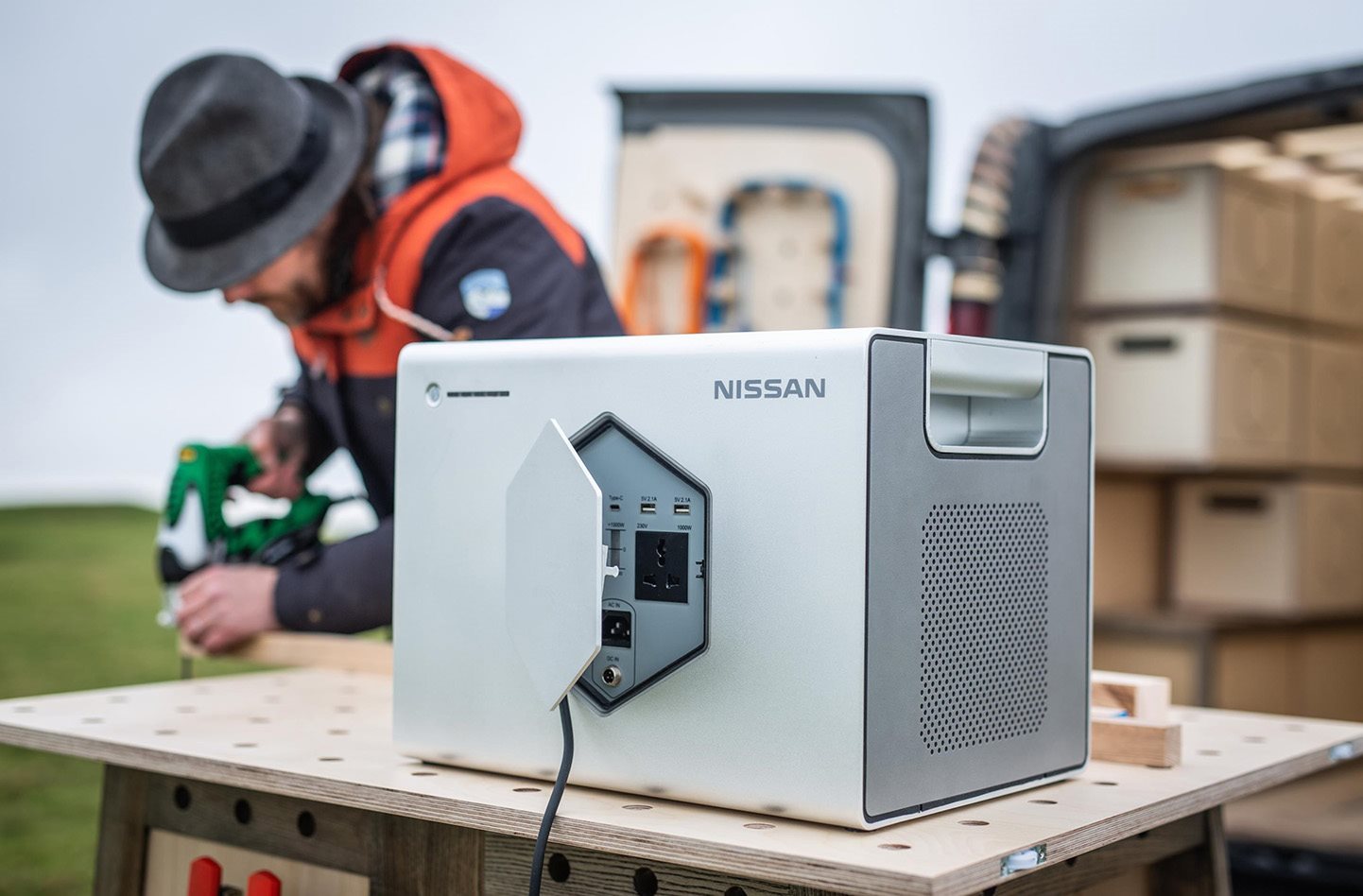
A favourite go-to for opponents of electric vehicles is the notion that EV batteries, once too far degraded to usefully power a car, become little more than poisonous landfill.
However, a number of carmakers and many new businesses are cooperating to prove that EV battery packs have huge value in the ‘afterlife’.
In 2019, Bloomberg NEF (BNEF) released data that forecast the global mountain of used EV batteries will amount to 3.4 million by 2025, highlighting the importance of repurposing or recycling as more electrified cars reach the end of their useful life and start showing up in scrap yards.
The good news is that even when they’re no longer suitable for vehicle use, lithium-ion battery packs can retain around 80 per cent of their charge capacity – enabling a second life running a further 10 years or more.
In this story, we’re keeping a chronicle of key moments in the evolving post-vehicle battery market.
JUMP AHEAD
- Kia Australia announces battery repurposing program
- Jaguar batteries storing solar and wind energy
- Infinitev repurposing EV batteries in Australia
- Retired EV batteries powering California
- Nissan Leaf batteries used for sea and rail
- Audi EV batteries replacing lead-acid in forklifts
- Mercedes, Hyundai and BMW efforts
- Relectrify using old EV batteries in Australia
- Limitations…
- What happens EV batteries are truly dead?
- ? HELPFUL LINKS
October: Kia Australia announces battery repurposing program
A week out from the Australian launch of its massive new EV9 SUV, Kia has revealed it will look to local outfit Infinitev on the recycling and repurposing of batteries when they’re too tired to run your EV.
August 2023: Jaguar providing I-Pace batteries for solar and wind power storage systems
Indian-owned British carmaker JLR will provide 30 ‘second-life’ I-Pace batteries to Wykes Engineering in the UK, enabling 2.5MWh of storage for solar and wind power.
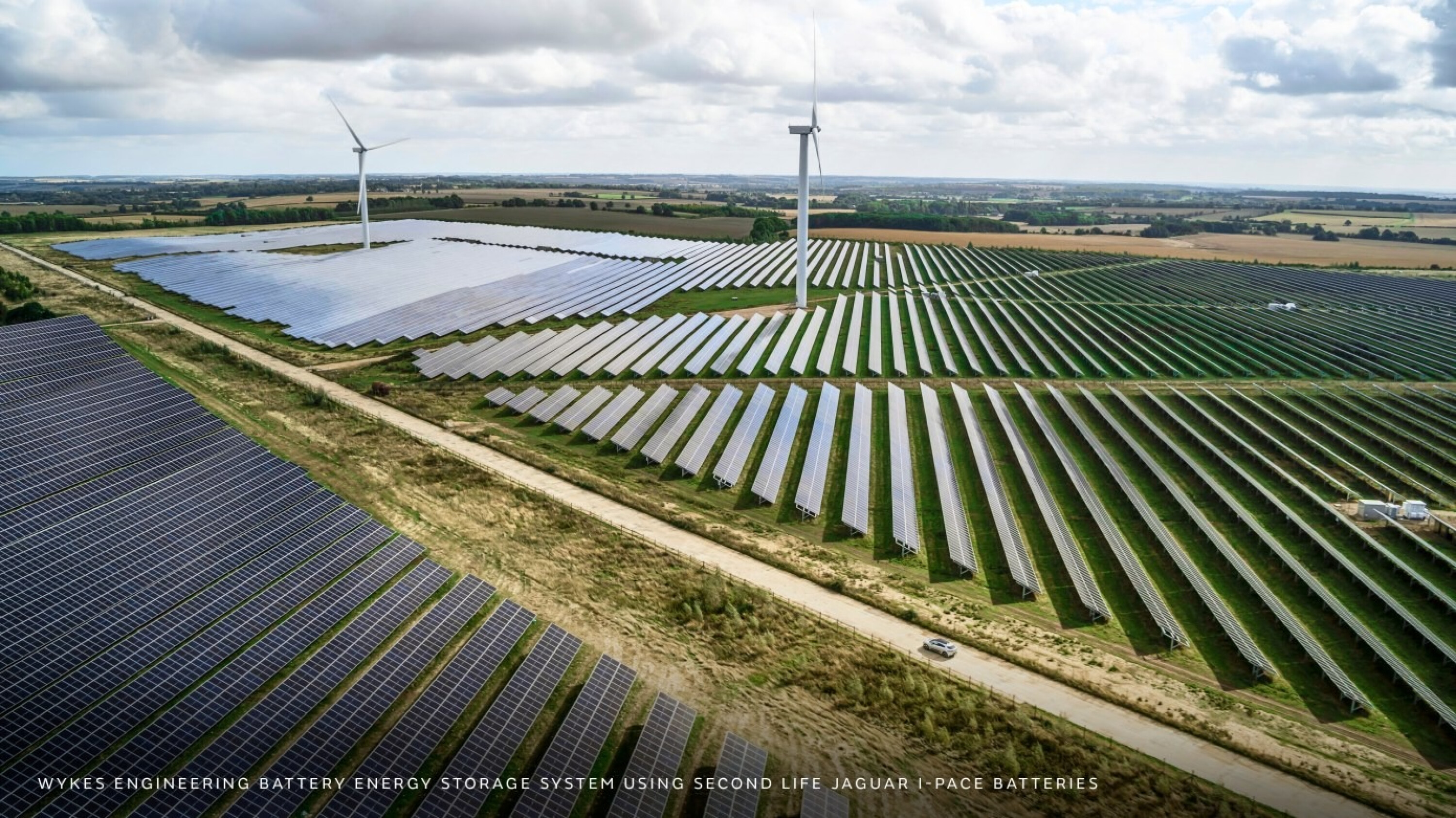
According to UK energy data, that amount of storage is enough to power 250 homes for one day. (Jaguar notes this figure is based on 2019 ‘average annual household electricity consumption’ of 72.3kWh per week.)
“JLR’s batteries are engineered to the highest standards and can therefore be deployed in low-energy situations once their health falls below the stringent requirements of an electric vehicle, which typically leaves a 70-80% residual capacity,” the company claims.
Jaguar says the purpose of this system is to deal with peaks in demand, but as more such systems come online, they could become a consistent piece of the decarbonisation puzzle that many governments are now putting together.
In announcing the project, JLR said second-life battery supply for stationary applications, like renewable energy storage, “could exceed 200 gigawatt-hours per year by 2030, creating a global value over $30 billion,” according to global economic consultants McKinsey.
February 2023: Retired EV batteries powering California
An American startup is powering California’s electricity grid using 1300 old electric vehicle battery packs.
November 2022: InfinitEV repurposing EV batteries in Australia
Melbourne firm IM Group has launched Infinitev – a service conceived to reuse, repurpose or recycle hybrid and EV batteries.
November 2021: Old Nissan Leaf batteries used for sea and rail travel
Among the many purposes already imagined for battery packs no longer suited to powering cars, some are quite novel.
Take, for example, the eVoyager – a small seagoing ferry in Cornwall, England, that’s powered by repurposed Nissan Leaf batteries.
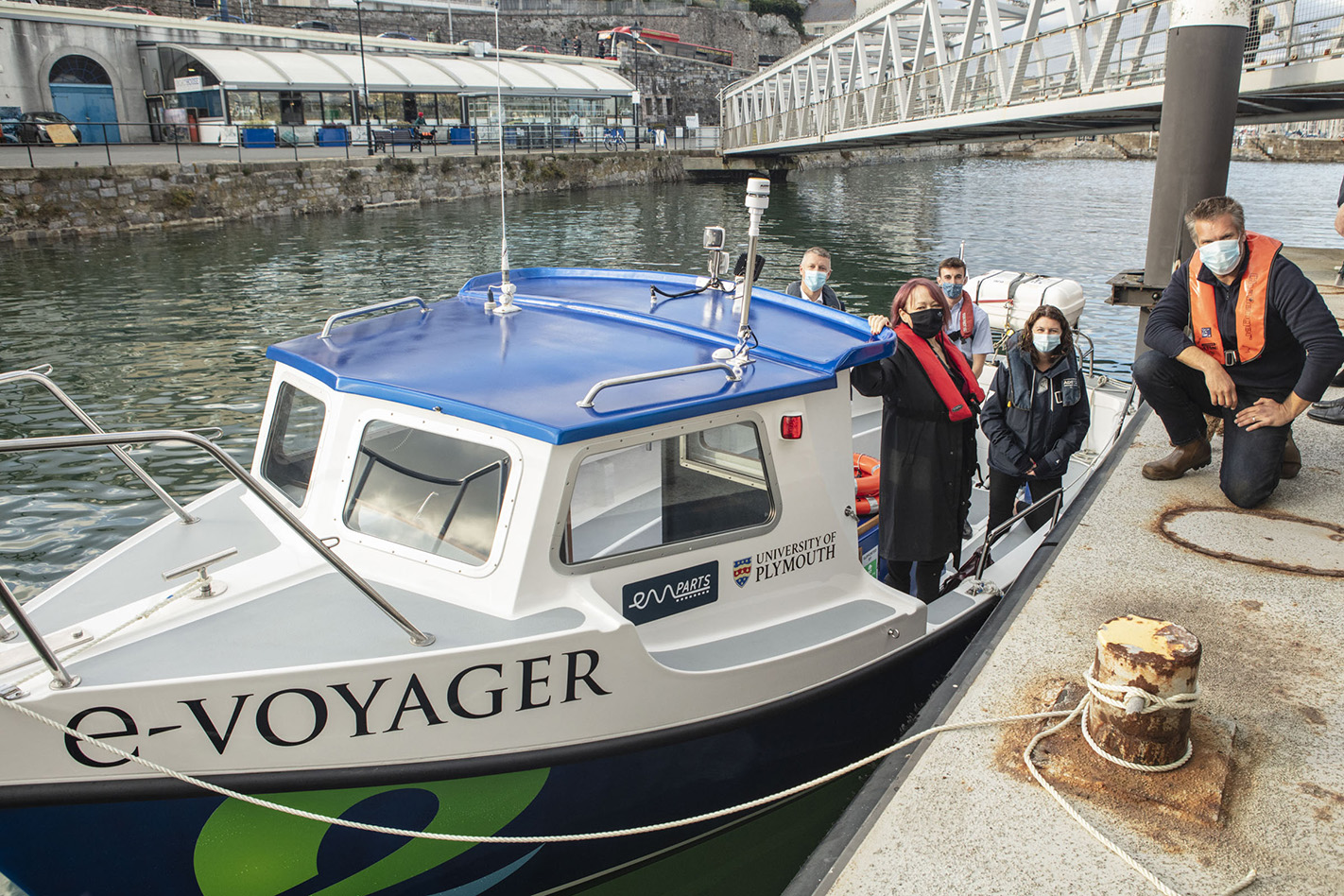
Over in Japan, the East Japan Railway Company (JR East) has been trialling repurposed Leaf batteries for emergency power supplies at its level crossings in place of older lead-acid battery technology.
The current emergency power supply units use lead-acid batteries. However, efforts to replace these with repurposed Nissan Leaf batteries began in January 2021 at the Atago railroad crossing on the Jōban Line, which runs through Minamisoma City in Fukushima Prefecture.
Compared to lead-acid batteries, the repurposed lithium-ion packs offer improved performance and can be charged in one-third of the time.
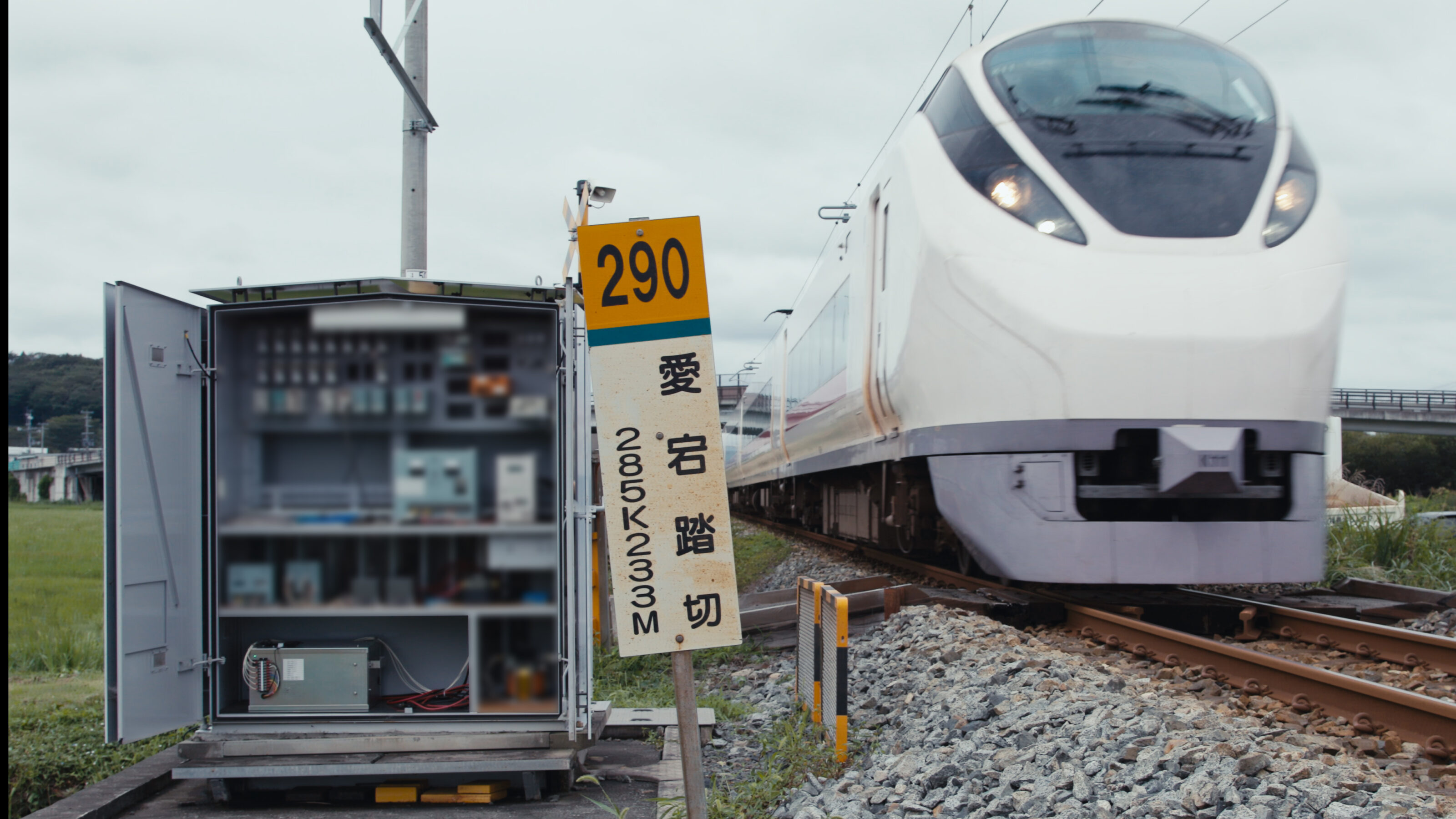
Lithium-ion battery packs are also far more durable, lasting on average 10 years, compared to three-to-seven years for a standard battery, and they require far less preventative maintenance.
Nissan itself has been proactive in finding ways to repurpose batteries, including using them to power camping trailers. Last year the company launched a ‘Roam’ battery pack that features lithium-ion battery cells from first-gen Leaf cars capable of storing up to 700Wh of electricity.
While that’s a tiny figure for moving a vehicle, Nissan says when used to store power from a 400W solar panel they’ll be able to provide a week’s worth of power for a camper trailer. In addition, the Roam unit is portable and can also be used separately for a range of applications including work sites.
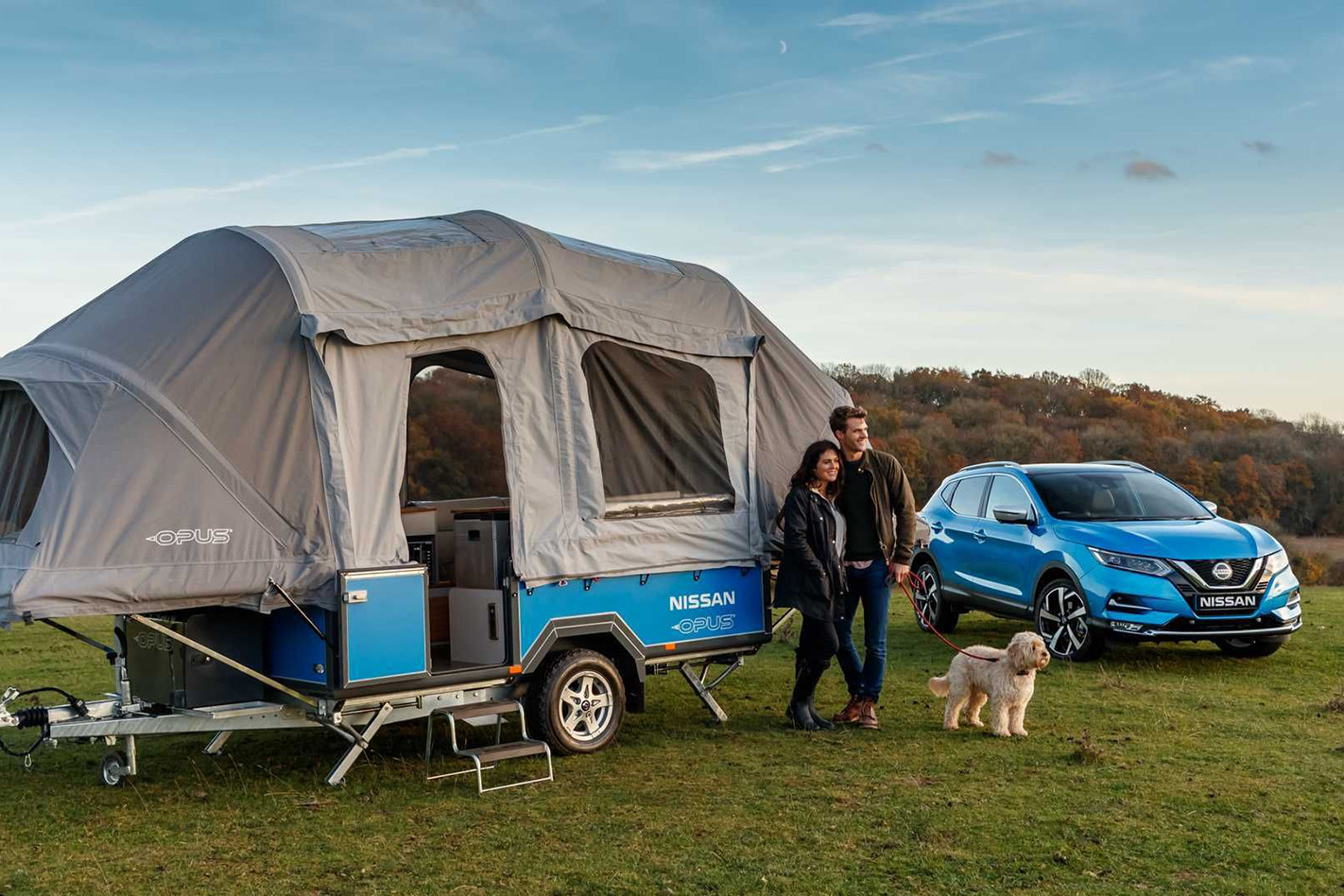
Audi… forklifts?
German carmaker Audi is using lithium-ion batteries from its old hybrid and e-tron models to replace heavy lead-acid batteries in forklifts at its Ingolstadt factory.
Not only are the batteries finding a second use, they are lighter than the type they replace.
And in 2019 Volkswagen announced it would use old batteries from its vehicles to create portable EV recharging stations that could hold up to 360 kilowatt-hours of energy – enough to charge up to four vehicles at a time.
Most repurposed EV batteries are likely to end up as power storage for homes and businesses in so-called ‘power walls’ but not all electrified vehicles employ lithium-ion technology.
Toyota still favours nickel-metal hydride (NiMH) for some of its hybrid models which is not as energy dense as Li-ion but is significantly cheaper. Here too though, there are recycling possibilities.
Retired Toyota Prius batteries are being used to store power from solar panels in 7-Eleven stores across Japan, and in Sweden a similar scheme is using Volvo batteries to charge three-storey apartment buildings.
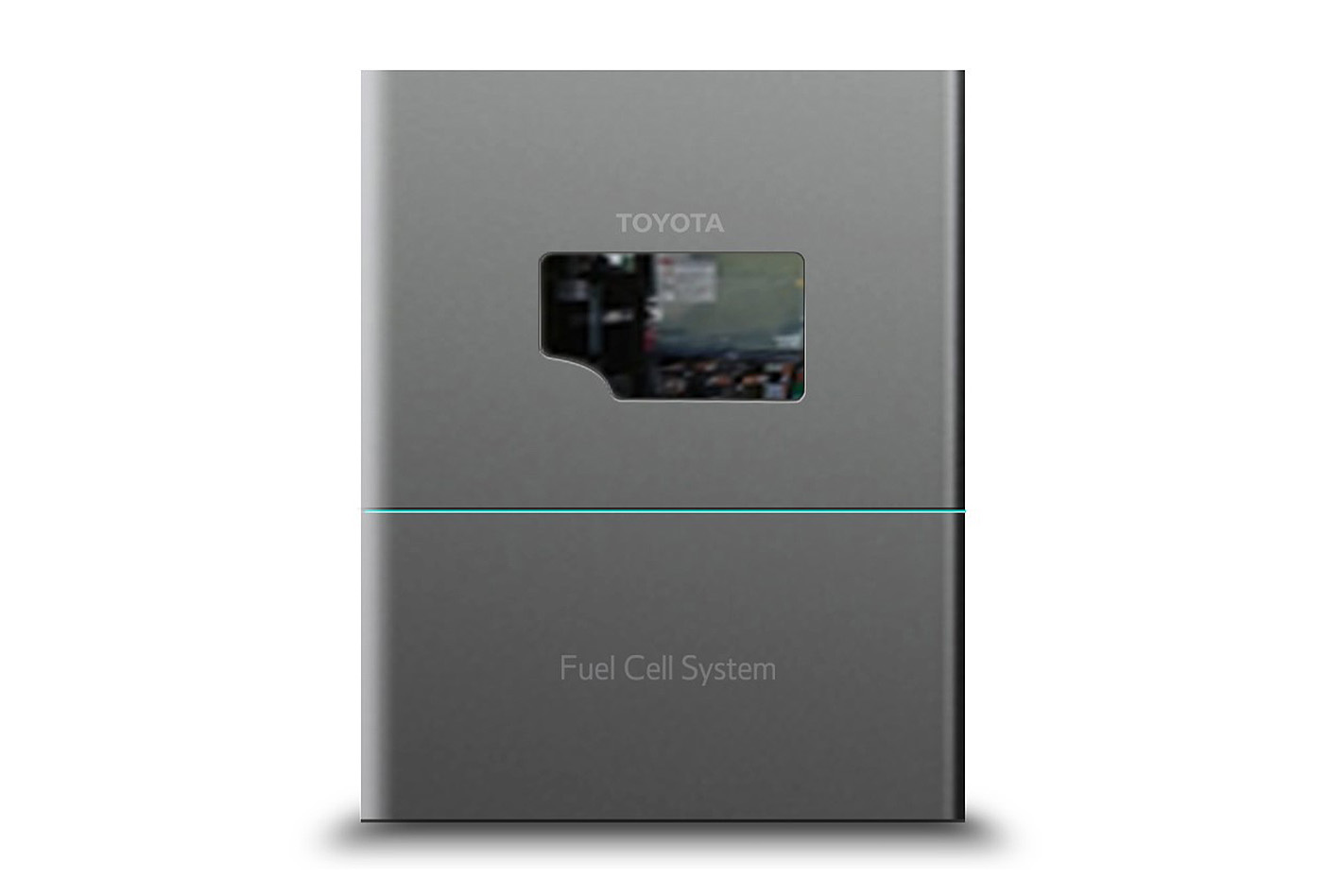
Elsewhere: Mercedes, Hyundai and BMW
- Mercedes-Benz Energy is converting a retired coal-fired plant in Elverlingsen, Germany, into an 8.96 MW energy storage facility using 1920 modules from EV battery packs.
- Hyundai is collaborating with Finnish energy technology group Wärtsilä to use EV batteries for energy storage.
- BMW is teaming with Swedish energy company Vattenfall to build a 2.0MW energy storage facility in Hamburg using 2600 retired battery modules from more than 100 BMW cars to stabilise the grid and reduce the impact of peak demand.
Right here in Australia
Melbourne-based Relectrify is producing powerful storage systems with battery packs from several Nissan Leafs to provide a three-phase 380-480V output suitable for commercial and industrial use.
A notable feature of Relectrify’s self-contained battery storage is that it has an inbuilt inverter which means it you can plug a power consumer straight into it without additional electrical hardware.
Second-life battery limitations
You may have noticed that all the above-mentioned projects use batteries from a particular vehicle or brand.
That’s because the batteries are designed specifically for certain models or brands, which makes it difficult to mix and match.
Then there are issues of buying used hardware. Repurposed batteries don’t come guaranteed and, as new batteries become cheaper, converting old batteries for new uses won’t be as cost effective.
What happens when EV batteries are truly dead?
At some point, even second-life batteries will run out of spark. What’s to be done with their various components and materials?
Companies like Tesla, BMW and Volkswagen are working on ways to break down batteries and separately extract as much of the raw materials as possible to use for new battery production.
So, what happens during battery recycling? Batteries that do not have further use in their current state are broken down into the constituent parts and shredded.
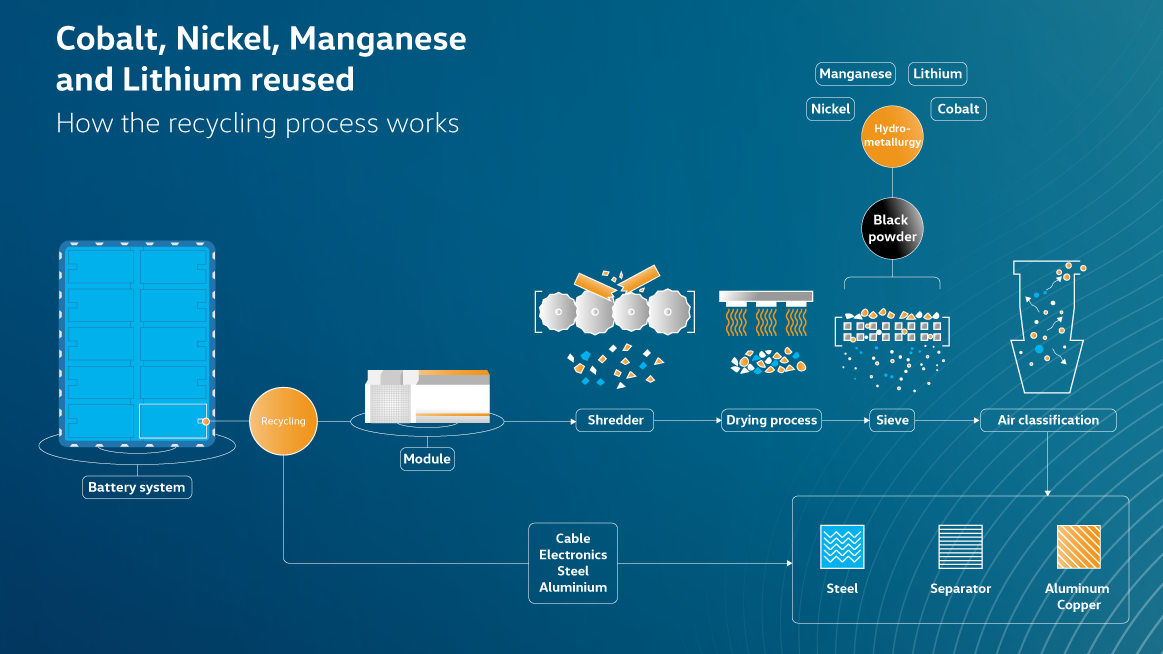
Volkswagen says it reclaims up to 70 percent of the raw materials from retired batteries, and is aiming for 97 percent in the near future
The resulting material is then dried and sieved, allowing the various metals and chemicals contained to be extracted, including the so-called “black powder.” This contains the valuable raw materials of nickel, manganese, cobalt and lithium.
These are then separated and used in the production of new batteries. Volkswagen reclaims up to 70 percent of the raw materials from batteries and is aiming for 97 percent in the near future.
Here’s hoping that all the initiatives to repurpose and recycle batteries, and various legislation around the worlds to ensure it continues, will ensure EVs don’t have an adverse effect on the environment once they’ve left the roads.
More EV stories to help you choose the best car for your needs
- ? EV news, reviews, advice & guides
- ❓ Short & sweet: Your EV questions answered
- ⚡ New EVs: Everything coming to Australia
- ? Australia’s EVs with the longest driving range
- ⚖️ Best-value EVs by driving range
- ? How much do EVs cost in Australia?
- ? How much more expensive are EVs?
- ⚖️ Number crunching: Is it time to switch to an EV?
- ♻ Should you buy a used EV?
- ?️ Are EVs more expensive to insure?
- ? Costs compared: Charging an EV vs fueling a car
- ? EV charging guide
- ? Are there enough EV chargers in Oz?
- ?? EV servicing explained
- ? EV battery types explained
- ? When do EV batteries need replacing?
- ? Hydrogen v EVs: What’s best for Oz?
- ✋? Mind your manners! EV charging etiquette tips
- ? How sustainable are EVs, really?
MORE advice stories to help you with buying and owning a car
We recommend
-
 News
NewsAudi gives old E-Tron batteries a new lease on life
Audi is trialling a sustainable EV charging station using lithium-ion batteries taken from disassembled development vehicles
-
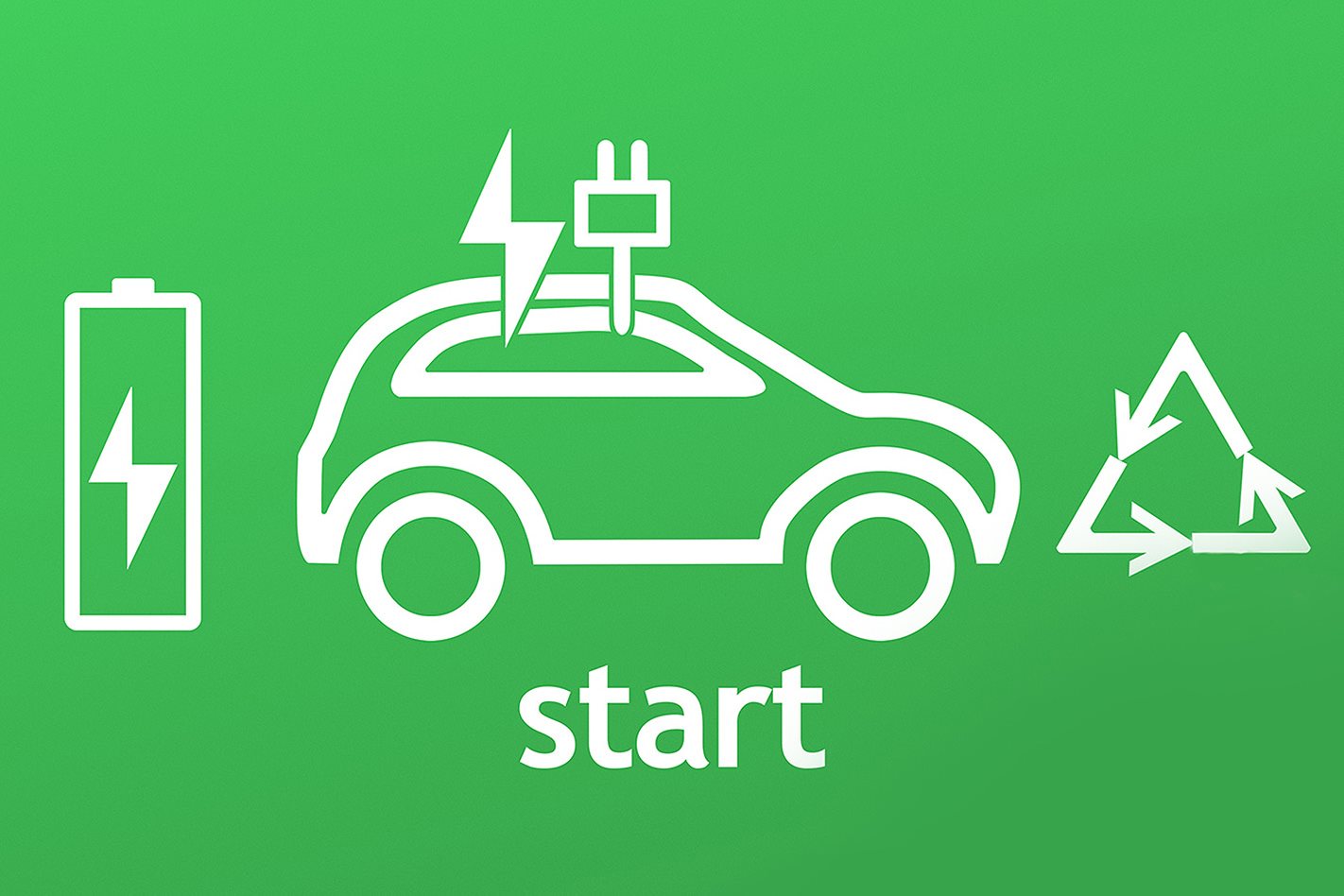 News
NewsMelbourne firm gives new life to EV batteries
Power solutions firm Relectrify has received a grant to roll out second-life lithium-ion batteries for power storage
-
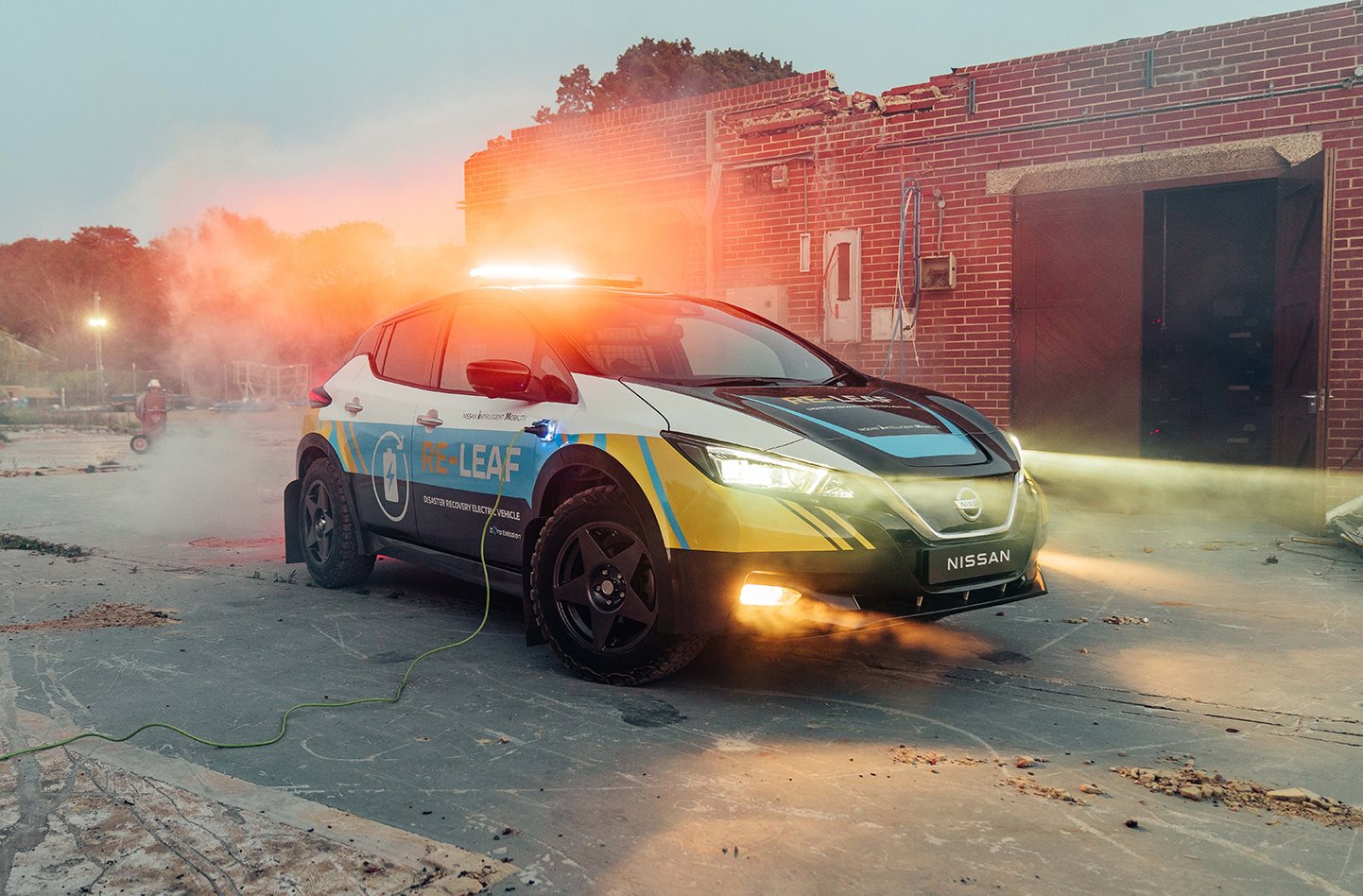 News
NewsNissan turns Leaf EV into a mobile emergency power station
Nissan's RE-LEAF concept shows how EVs can have broader applications and that a crossover version of the Leaf EV hatch wouldn’t be a terrible idea.



